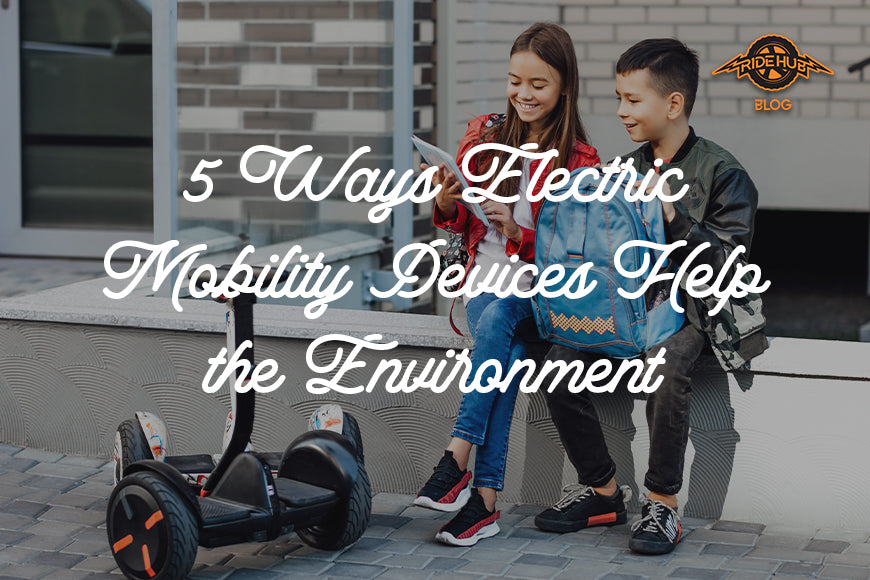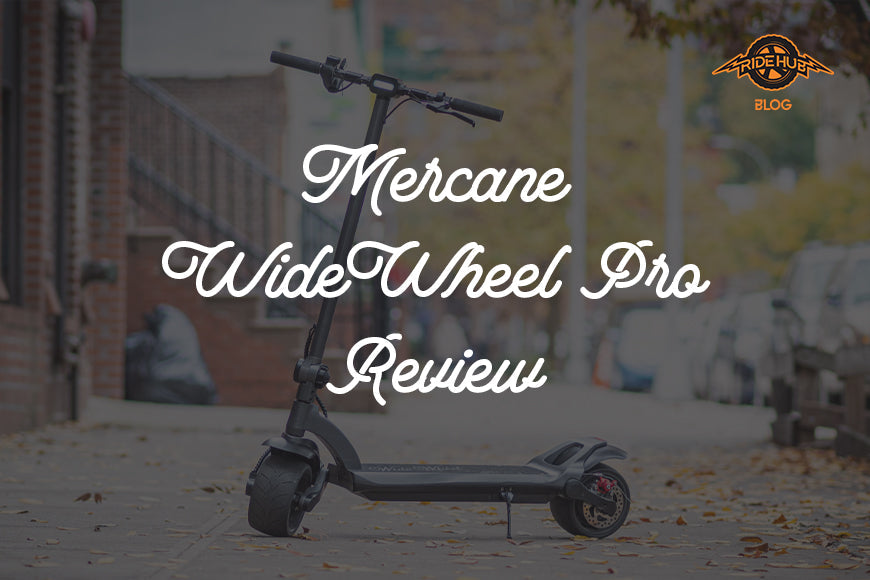Transportation sectors worldwide continue to promote greener transport alternatives, given the increasing pollution and gas prices in cities. Many cities have started to allow shared and personal electric mobility devices (PEMDs) to resolve this congestion and environmental concern.
PEMDs are compact and motorised micro-mobility vehicles that transport individuals at speeds of up to 25 km/h. These include electric scooters, electric bikes, balance scooters, and electric skateboards. They have become the solution for a sustainable, efficient, and low-cost transport option.
However, more cities implement these micro-mobile transport systems to reduce road transportation’s effects on the environment. How do personal mobility devices help save the environment? Here are five ways electric mobility devices help the environment.
5 Ways Electric Mobility Devices Help the Environment
-
E-rides Help Reduce Air Pollution
The biggest challenge for highly dense cities is the high carbon emissions from road transportation. In the UK alone, road transportation contributes 28 per cent of carbon emissions. Moreover, it is the biggest sector that produces the most harmful emissions globally. Electric mobility devices help lessen air pollutants since they produce zero emissions.
Electric scooters, electric bikes, and other micro-mobility devices use electric motors and don’t have tailpipes, so they don’t emit any bad emissions. A study by shared e-scooter company Lime found that e-scooters helped save around 330 tons of CO2 emissions in Paris for a year. Overall, these transport devices have proven their benefit and role in reducing carbon emissions in the atmosphere.
-
It Produces Fewer Emissions throughout its Life Cycle
Electric vehicles may not produce harmful gases, but they produce emissions when you look at their overall life cycle. However, these emissions are significantly lower than non-electric vehicles. The European Energy Agency found that electric cars have 17 to 30 per cent lower emissions from charging compared to their traditional counterparts. This can be likened to micro-mobility devices as well, given that they have a smaller build, battery and motor.
-
Many Electric Vehicles Use Recyclable Material
Most micro-mobility devices have a short life span. For example, an e-scooter only has an average life span of 2-3 years. Meanwhile, shared e-scooters last for only a few months, depending on how riders use them. When they are no longer functional, they add to increasing land waste.
Fortunately, many micro-mobility devices use recyclable materials, like aluminium alloy, to reuse parts and reduce waste. Some parts are also made from magnets, copper wires, and other types of metals. More manufacturers use sustainable materials to reduce their impact on the environment, from the start to the end of the life cycle.
-
It Promotes Renewable Energy Resources
Personal mobility devices don’t need fuel to run, and instead, use electrical energy, which is less harmful to the environment. These devices can also be charged using solar and wind technology, depending on your available energy source. Moreover, many manufacturers use renewable energy sources to produce e-scooters, e-bikes, and more.
-
E-Rides Offer a Quiet Alternative to City Travelling
One kind of pollution that’s unnoticeable but starts to creep in within highly-dense cities is noise pollution. It refers to excessive noise from road transportation, nightlife, people, construction, and more. Prolonged exposure to noise pollution could lead to hearing loss, headaches, damaged eardrums, fatigue, and more.
Road transportation like cars, buses, and motorcycles all produce loud noises. However, personal electric mobility devices provide a quieter alternative when riding. Since they don’t have a large motor, e-scooters, e-bikes, and balance scooters zip through roads quietly even at top speeds. That’s why these personal transporters are perfect for suburbs and residential areas. If more people use these devices, it would lessen noise pollution from road vehicles.
The Best Electric Mobility Device to Buy
The most popular electric mobility devices include e-bikes, e-scooters, e-skateboards, and hoverboards or balance scooters.
Electric bikes provide riders with an easier way to ride a bike, thanks to their pedal assist. Pedalling and climbing are easier with a bicycle thanks to its electric motor. Meanwhile, electric skateboards and hoverboards provide a lightweight and compact way to travel around the city.
However, electric scooters have become the most popular means of transport for many commuters. It offers a good balance of convenience, portability, performance, and affordability.
Popular electric scooter models include the Segway Ninebot MAX G30 and the Inokim OX Eco. These are powerful e-scooters that’s perfect for everyday rides or occasional off-roading.
Either personal mobility device will give you a convenient, efficient, and quick way to travel within cities. When choosing an e-ride, start by determining your commuting needs. Do you need an everyday ride? Do you need a lightweight ride to carry inside elevators or up the stairs? Do you need a compact ride to store inside your small apartment? Consider all of these questions to narrow down your choices. Ultimately, the best e-ride for you is one that fits your needs best.
Read more e-ride guides and tips at Ride Hub’s blog.







